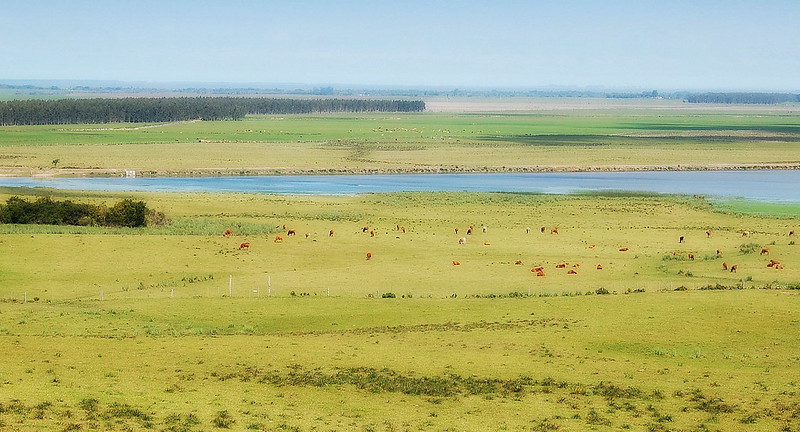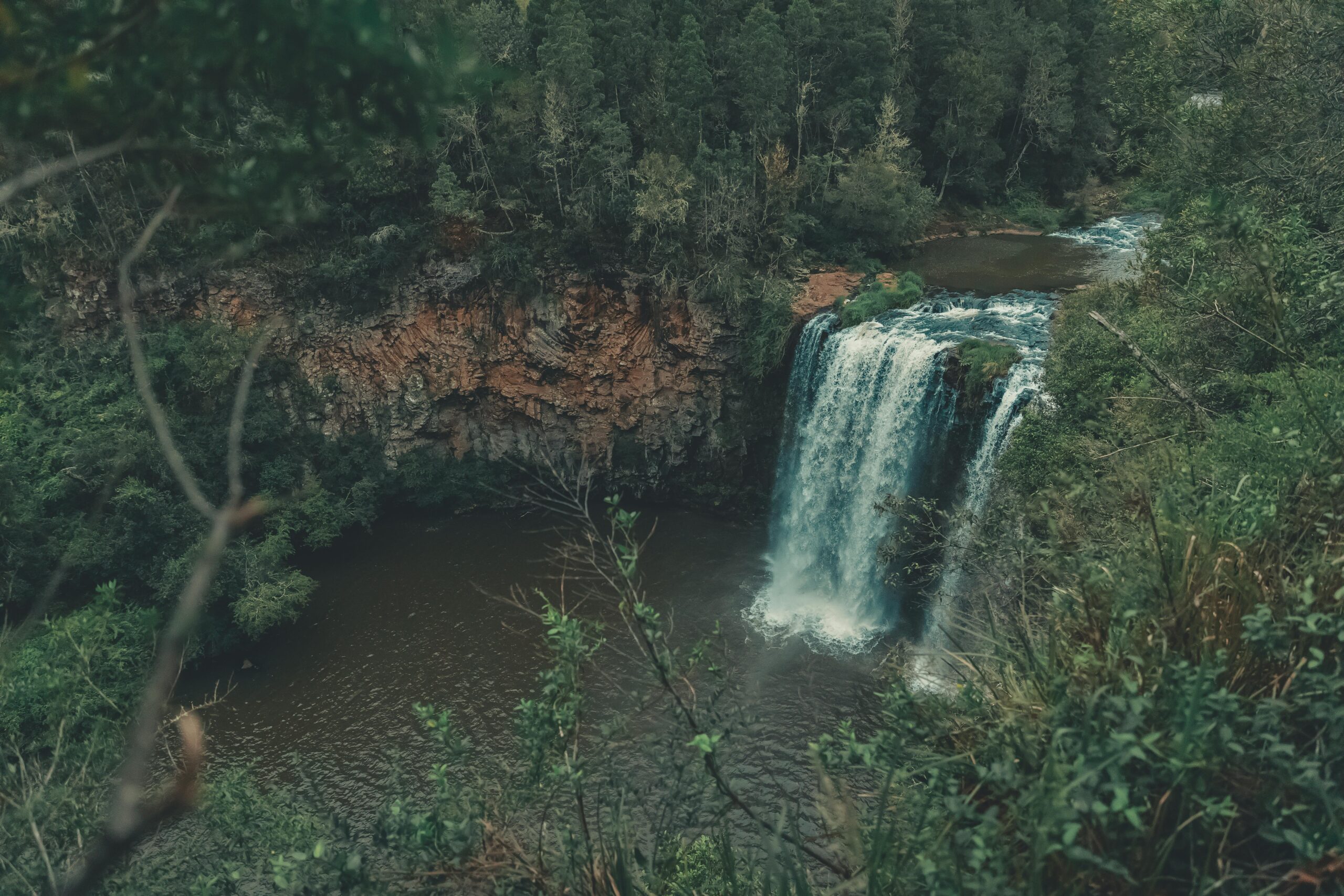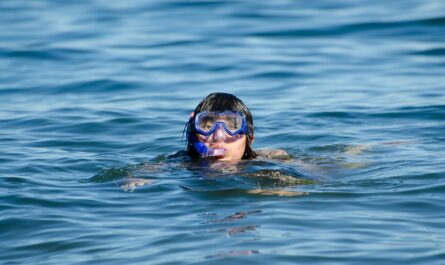Nestled in the Solomon Islands, Santa Isabel is an eco-tourism paradise known for its untouched beauty, rich biodiversity, and traditional cultures. Unlike some of its more tourist-heavy neighbors, Santa Isabel remains largely unspoiled, offering visitors a chance to connect with pristine natural landscapes and ancient traditions. This island, the third-largest in the Solomon Islands archipelago, is a hidden gem for those seeking adventure in the heart of the Pacific, where eco-tourism blends seamlessly with cultural heritage and environmental preservation.
From its dense rainforests to vibrant coral reefs, Santa Isabel is a treasure trove of natural wonders waiting to be explored. Whether you’re interested in wildlife spotting, hiking through lush jungles, or diving into clear blue waters, the island promises an unforgettable eco-tourism experience that both protects and promotes its natural and cultural heritage.
1. Santa Isabel: A Paradise of Untouched Landscapes
Santa Isabel is often described as one of the most remote and beautiful islands in the Solomon Islands group. The island stretches over 200 kilometers in length but is sparsely populated, with much of the land covered by dense rainforests and rugged terrain. Its isolation has allowed the island to preserve its ecosystems and remain largely unaffected by the modernization seen in other parts of the Pacific.
Rainforests and Biodiversity
The rainforests of Santa Isabel are teeming with biodiversity. The island’s tropical climate creates ideal conditions for a wide variety of plant and animal life. The rainforests are home to numerous endemic species, including the Isabel monitor lizard and the black-faced pitta, a rare bird species found only on the island. The forest canopy, alive with birdsong and the rustling of leaves, offers a sense of tranquility rarely found elsewhere.
For eco-tourists, Santa Isabel offers several rainforest trails that take visitors deep into the island’s interior. These treks are perfect for birdwatchers and wildlife enthusiasts, who can spot everything from parrots and hornbills to the elusive endemic mammals such as the Solomon Islands flying fox. The island’s commitment to conservation is evident in its efforts to protect these species, with local guides often leading eco-friendly tours that highlight the importance of preserving this fragile ecosystem.
Waterfalls and River Systems
In addition to its rainforests, Santa Isabel is dotted with rivers and waterfalls, many of which remain hidden from the casual traveler. The island’s water systems are essential to both the environment and the traditional way of life for its people. Some of the most breathtaking spots include Maringe Lagoon and several unnamed waterfalls that cascade through the rainforest into crystal-clear pools, providing an ideal spot for eco-tourists to swim and relax.
The waterfalls also serve as crucial sites for maintaining local biodiversity, and many eco-tours highlight the importance of protecting these freshwater ecosystems from threats such as deforestation and pollution. Guided tours often emphasize how local communities rely on these natural resources for both sustenance and spiritual practices, giving visitors an authentic cultural perspective on conservation.
2. Marine Life and Coral Reefs: Diving and Snorkeling Adventures
Santa Isabel’s marine ecosystems are as rich and diverse as its terrestrial landscapes. The surrounding coral reefs, mangroves, and lagoons offer an underwater playground for eco-tourists interested in snorkeling, diving, and marine wildlife observation.
Diving the Coral Reefs
The waters surrounding Santa Isabel are home to some of the most vibrant coral reefs in the Solomon Islands, making it a prime destination for divers. The Maringe Lagoon is particularly famous for its coral diversity, where divers can explore a world of hard and soft corals that are teeming with marine life. The reefs are in excellent condition, with crystal-clear visibility and minimal human interference.
Divers can expect to encounter a wide variety of marine species, including reef sharks, turtles, and schools of colorful fish such as clownfish, butterflyfish, and parrotfish. Dolphins and manta rays are also commonly sighted in the deeper waters, and during certain times of the year, lucky divers might even spot humpback whales passing through the region during their migration.
Snorkeling is another fantastic way to explore Santa Isabel’s underwater world. Shallow reefs close to the shoreline are perfect for snorkelers of all skill levels. With the protection of marine sanctuaries, these reefs remain some of the best-preserved in the Pacific.
Marine Conservation Efforts
Santa Isabel has embraced eco-tourism as part of its marine conservation efforts. Community-driven conservation initiatives are working to protect coral reefs and marine habitats from threats like overfishing and climate change. Local leaders have established Marine Protected Areas (MPAs) around key reefs, ensuring that the ecosystem remains vibrant for future generations.
For eco-conscious travelers, visiting these areas helps support local conservation efforts. Many eco-tour operators partner with community-based organizations, ensuring that tourism revenue is reinvested into protecting the island’s delicate marine ecosystems. These partnerships allow visitors to experience the beauty of Santa Isabel’s coral reefs while contributing to their preservation.
3. Cultural Eco-Tourism: Embracing Tradition and Nature
Santa Isabel is not just a destination for nature lovers; it is also a place where visitors can immerse themselves in the rich cultural heritage of the Isabel people. The island’s traditional way of life remains largely intact, with many communities still relying on subsistence farming, fishing, and craftsmanship passed down through generations. Eco-tourism in Santa Isabel is as much about learning from the local people as it is about exploring nature.
Village Homestays
One of the best ways to experience the cultural side of Santa Isabel is by participating in a village homestay program. These programs allow visitors to live with a local family, sharing in their daily activities and learning about traditional practices such as weaving, fishing, and gardening. For those interested in the island’s spiritual traditions, many communities also offer insights into their ancestral worship practices and the kastom (customary) laws that govern daily life.
These homestay programs not only provide a deeper understanding of local culture but also contribute directly to the livelihoods of the host families, ensuring that tourism benefits the community as a whole. Eco-tourists are encouraged to embrace the slow pace of life on the island and to engage in meaningful exchanges with their hosts, fostering cross-cultural connections.
Canoe Adventures
A unique feature of Santa Isabel’s eco-tourism offerings is the traditional canoe tours. The people of Santa Isabel have long used canoes for transport, fishing, and trade, and today visitors can experience this ancient tradition firsthand. Canoe tours typically involve paddling through mangrove forests, rivers, and coastal lagoons, providing a peaceful way to explore the island’s natural beauty.
Many canoe tours are led by local guides who are experts in the island’s ecosystems. They can point out various plants and animals along the way and explain the significance of certain areas to the island’s cultural and spiritual life. These tours also help support local communities and encourage the sustainable use of natural resources.
4. Hiking and Nature Trails: Exploring Santa Isabel on Foot
For those who prefer land-based adventures, Santa Isabel offers a variety of hiking trails that take visitors through some of the island’s most stunning landscapes. From rainforest treks to coastal walks, there are plenty of opportunities to explore the island’s untouched beauty on foot.
Jungle Treks
Santa Isabel’s jungle treks are perfect for eco-tourists looking to experience the island’s rich biodiversity up close. Many of these treks lead to remote waterfalls, highland villages, or viewpoints that offer panoramic vistas of the surrounding forests and ocean. The trails vary in difficulty, making them accessible to both casual hikers and more experienced adventurers.
Local guides are essential for these treks, as they not only help visitors navigate the dense forests but also share their knowledge of the plants and animals that inhabit the area. The guides often point out medicinal plants, explain traditional uses of the forest’s resources, and share stories of the island’s history and mythology, providing a holistic experience of nature and culture.
Birdwatching and Wildlife Tours
Santa Isabel is a birdwatcher’s paradise, with over 160 species of birds recorded on the island, including many endemics. The island is home to the Sanford’s sea eagle, the Solomon Islands cuckoo-shrike, and the Cardinal honeyeater, among others. For birdwatching enthusiasts, guided tours can be arranged to spot these rare and colorful species in their natural habitat.
Nature tours also focus on the island’s other wildlife, including the Isabel monitor, a large lizard species that is a favorite among eco-tourists. These wildlife tours are designed to minimize environmental impact while maximizing the chances of seeing Santa Isabel’s unique fauna.
5. Sustainable Tourism Practices: Protecting Santa Isabel’s Future
One of the key elements of Santa Isabel’s eco-tourism industry is its commitment to sustainability. The island’s remote location and small population have helped preserve its natural beauty, but increasing tourism brings new challenges. Recognizing this, the local government and communities have implemented a range of sustainable tourism practices aimed at balancing economic development with environmental protection.
Community-Based Eco-Tourism
Many of the eco-tourism ventures on Santa Isabel are community-based, meaning that local people play an active role in managing tourism activities. These initiatives help ensure that the benefits of tourism are distributed fairly and that the island’s natural and cultural resources are protected. Visitors are encouraged to respect local customs, minimize waste, and contribute to conservation efforts during their stay.
Additionally, eco-lodges and homestays on the island often use environmentally friendly practices such as solar energy, rainwater harvesting, and organic farming. These sustainable accommodations provide a comfortable yet eco-conscious experience for visitors while reducing the environmental impactSanta Isabel’s Untouched Beauty: Eco-Tourism Adventures
Santa Isabel, part of the Solomon Islands archipelago, offers a unique eco-tourism experience that blends untouched natural beauty with vibrant cultural heritage. The island, known for its pristine rainforests, unspoiled coral reefs, and strong commitment to conservation, is a haven for nature lovers and adventure seekers. Unlike many other destinations in the Pacific, Santa Isabel remains largely off the beaten path, making it an ideal destination for travelers looking to explore a truly untouched paradise.
This article will guide you through the eco-tourism adventures available on Santa Isabel, including rainforest treks, diving in crystal-clear waters, cultural immersion experiences, and the sustainable practices that help preserve the island’s ecosystems.
1. Santa Isabel’s Natural Landscape: Rainforests and Biodiversity
Santa Isabel’s lush tropical rainforests are one of its greatest natural treasures. The island is covered in dense jungles that are home to a wide variety of flora and fauna, many of which are endemic to the Solomon Islands. The island’s biodiversity is particularly notable for its bird species, including the Solomon Islands sea eagle and the Isabel monarch, both of which are found nowhere else in the world.
Rainforest Treks
Eco-tourists can take advantage of numerous rainforest treks that wind through the island’s interior. These treks provide an opportunity to see the island’s rich biodiversity up close, with local guides offering insights into the island’s plant and animal life. The jungle is alive with the sounds of birds, insects, and other wildlife, creating an immersive natural experience.
Along these trails, visitors can also encounter pristine waterfalls, some of which are hidden deep within the rainforest. These waterfalls provide a refreshing break from the tropical heat and offer a serene place to relax amid nature.
Endemic Wildlife
For wildlife enthusiasts, Santa Isabel offers a chance to spot some of the Pacific’s rarest species. Birdwatchers, in particular, will delight in the opportunity to observe the island’s many endemic bird species, including the Sanford’s sea eagle and the black-faced pitta. The island’s unique biodiversity is not limited to birds; Santa Isabel is also home to reptiles like the Isabel monitor lizard and various species of bats.
The island’s rainforests are carefully protected by local conservation efforts, ensuring that visitors can enjoy these natural wonders without causing harm to the environment.
2. Marine Life and Coral Reefs: A Diver’s Paradise
While Santa Isabel’s rainforests are a major draw, the island’s marine ecosystems are equally spectacular. The surrounding waters are home to some of the most vibrant coral reefs in the Pacific, making the island a top destination for divers and snorkelers. The waters are crystal clear, with visibility often exceeding 30 meters, providing an unparalleled view of the underwater world.
Diving and Snorkeling Adventures
The reefs around Santa Isabel are teeming with life, offering divers the chance to explore a rich variety of marine species. Colorful corals, reef fish, and larger marine animals such as manta rays and reef sharks can be seen in abundance. The Maringe Lagoon is one of the best diving spots on the island, known for its pristine coral formations and diverse marine life.
For those who prefer snorkeling, the shallow reefs close to the shore offer an equally impressive experience. Snorkelers can swim among schools of tropical fish and explore coral gardens just a short distance from the island’s beaches.
Marine Conservation Efforts
Santa Isabel’s marine ecosystems are not just a tourist attraction; they are also carefully protected through local conservation efforts. The island has several Marine Protected Areas (MPAs), which help safeguard coral reefs and marine habitats from overfishing and environmental degradation. Visitors can support these conservation efforts by choosing eco-friendly tour operators and participating in activities that promote sustainability, such as reef clean-ups or educational tours led by local environmental groups.
3. Cultural Immersion: Connecting with Santa Isabel’s Traditions
In addition to its natural beauty, Santa Isabel offers a rich cultural experience. The people of Santa Isabel have maintained many of their traditional ways of life, and visitors can learn about their customs through homestays, cultural tours, and community-led eco-tourism initiatives.
Village Homestays
One of the best ways to experience Santa Isabel’s culture is through a village homestay. These programs allow visitors to stay with local families, participating in daily activities such as fishing, farming, and cooking. Visitors can learn traditional skills such as weaving and wood carving, gaining a deeper understanding of the island’s culture and history.
Homestays also provide an opportunity to witness traditional ceremonies and rituals, many of which are tied to the island’s natural environment. Whether it’s a community feast or a spiritual ceremony, these cultural experiences offer a unique glimpse into the lives of the island’s residents.
Canoe Tours and Traditional Fishing
Another popular eco-tourism activity on Santa Isabel is a traditional canoe tour. The people of Santa Isabel have used canoes for transport and fishing for centuries, and visitors can experience this age-old tradition by joining a canoe tour. Paddling through mangrove forests and coastal waters, visitors can see the island from a new perspective, all while learning about the sustainable fishing practices that have supported the island’s communities for generations.
These tours are often led by local guides who share stories about the island’s history and the cultural significance of the land and sea. Many of the tours also include opportunities for traditional fishing, where visitors can try their hand at catching fish using traditional methods.
4. Hiking and Eco-Trails: Exploring Santa Isabel on Foot
For adventurers who prefer to explore on foot, Santa Isabel offers several hiking and eco-trail options that take visitors through some of the island’s most stunning landscapes. Whether you’re trekking through dense jungle or hiking along the coastline, these trails provide an opportunity to immerse yourself in the island’s natural beauty.
Highland and Coastal Treks
Santa Isabel’s hiking trails range from challenging jungle treks to leisurely coastal walks. For those seeking a more strenuous adventure, the island’s highland trails offer spectacular views of the surrounding forests and ocean. These treks often lead to remote villages or scenic viewpoints, providing a sense of adventure and discovery.
Coastal treks, on the other hand, offer a more relaxed experience, with trails winding along the shoreline, passing through mangrove forests and sandy beaches. Along the way, visitors can stop for a swim or enjoy a picnic by the water, all while taking in the stunning coastal scenery.
Sustainable Hiking Practices
Like many eco-tourism activities on Santa Isabel, hiking is done with sustainability in mind. Local guides are trained in eco-friendly practices, ensuring that visitors can explore the island’s natural landscapes without causing harm to the environment. These guides also educate visitors about the importance of conservation and the steps that are being taken to protect the island’s ecosystems for future generations.
5. Sustainability and Eco-Tourism: Protecting Santa Isabel’s Future
Sustainability is at the heart of Santa Isabel’s eco-tourism initiatives. The island’s remote location and small population have helped preserve its natural beauty, but increasing tourism brings new challenges. Recognizing this, local communities and organizations have implemented a range of sustainable tourism practices aimed at balancing economic development with environmental protection.
Community-Based Eco-Tourism
One of the key components of Santa Isabel’s eco-tourism industry is its community-based approach. Many of the island’s eco-tourism ventures are managed by local communities, ensuring that tourism benefits the island’s residents while protecting the environment. Visitors are encouraged to support these community-based initiatives by choosing eco-friendly accommodations, participating in local tours, and respecting the island’s cultural and environmental norms.
Additionally, many eco-lodges and homestays on the island use sustainable practices such as solar energy, rainwater harvesting, and organic farming. These initiatives not only reduce the environmental impact of tourism but also provide visitors with a more authentic and eco-conscious experience.
Conservation and Education
Eco-tourism on Santa Isabel is not just about experiencing the island’s beauty; it’s also about promoting conservation and environmental awareness. Many of the island’s eco-tour operators work closely with conservation organizations to protect the island’s ecosystems and educate visitors about the importance of sustainability. Whether it’s through guided nature walks, conservation workshops, or community-led reef clean-ups, visitors to Santa Isabel can actively contribute to the preservation of the island’s natural resources.
Conclusion: Santa Isabel – A Hidden Paradise for Eco-Tourism
Santa Isabel’s untouched beauty, combined with its rich cultural heritage and commitment to sustainability, makes it one of the most compelling eco-tourism destinations in the Pacific. From its pristine rainforests and coral reefs to its traditional villages and community-based eco-tourism initiatives, the island offers a wide range of experiences for eco-conscious travelers.
Whether you’re hiking through the jungle, diving among vibrant coral reefs, or immersing yourself in the island’s culture through a village homestay, Santa Isabel promises an unforgettable eco-tourism adventure. As the island continues to protect its natural and cultural heritage, visitors can enjoy the peace of mind that their travel is contributing to the sustainable future of this Pacific paradise.
By choosing Santa Isabel as your eco-tourism destination, you are not only exploring one of the world’s most beautiful and remote islands but also supporting the local communities and conservation efforts that keep this island paradise pristine for future generations.



